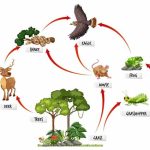Tenses for Kids: Mastering the Art of English Grammar with Types and Examples
When we communicate, one of the most essential elements to convey is the time at which an action took place. That’s where tenses come into play. But what is tenses? Simply put, tenses are the backbone of English grammar that helps us understand when an action happens. For our young readers, think of tenses like the different colors in a painting. Just as colors give life and meaning to a drawing, tenses give context to our sentences.
Understanding Tenses:
At its heart, the question “what is tenses?” can be answered simply. Tenses tell us when an action occurred. Was it in the past? Is it happening right now? Or is it something that will happen in the future? By mastering tenses, kids can express themselves clearly and understand others more effectively.
Types of Tense:
There are mainly three types of tenses: Past, Present, and Future. Each of these types of tense has four sub-categories. Let’s delve deeper into each of these types of tenses and learn with tenses examples. Past Tense: This refers to any action that has already happened. Simple Past: Describes actions that occurred and finished in the past. Example: He played football. Past Continuous: Talks about an ongoing action that was happening in the past. Example: He was playing football when it started raining. Past Perfect: Describes an action that was completed before another past action. Example: He had played football before he went home. Past Perfect Continuous: Describes an action that started in the past and continued up to a certain time in the past. Example: He had been playing football for an hour when it started raining. Present Tense: This refers to actions happening right now or habits and general truths. Simple Present: Talks about habits, general truths, or actions happening now. Example: She reads books. Present Continuous: Describes actions happening at this very moment. Example: She is reading a book now. Present Perfect: Describes actions that happened at an unspecified time before now. Example: She has read many books this year. Present Perfect Continuous: Talks about actions that started in the past and are still continuing. Example: She has been reading for two hours. Future Tense: This indicates actions that will take place in the future. Simple Future: Describes actions that will happen. Example: They will travel to Paris. Future Continuous: Talks about ongoing actions that will be happening in the future. Example: They will be traveling when you arrive. Future Perfect: Describes actions that will be completed before a certain time in the future. Example: They will have traveled to five countries by the end of the year. Future Perfect Continuous: Talks about actions that start in the future and continue for a specified period. Example: They will have been traveling for two months by the time you meet them. By studying the Tenses and Examples provided, children can better grasp how to correctly use each tense. Tenses examples provide clarity, ensuring that the principles stick in their young minds.
Why Learn Tenses?
Understanding the types of tense is crucial for multiple reasons. Firstly, it helps children convey their thoughts, stories, and ideas clearly. Whether they’re sharing what they did over the weekend, what they’re doing right now, or what they plan to do during the holidays, tenses help them paint a clear picture.
Furthermore, tenses form the foundation for more advanced English grammar and writing. As children progress in their education, having a firm grasp of tenses will be indispensable. Therefore, Tenses and Examples should be a significant part of their early learning.
Moreover, using the correct tense is essential to make sense in conversations and written communication. For instance, saying “I eats” instead of “I eat” might confuse listeners. This is why understanding what is tenses and its application is vital.
The Magic of Tenses in Storytelling:
Another fantastic way to understand tenses is through storytelling. Stories have always been a significant part of childhood. From bedtime tales to the stories shared with friends during playtime, narratives shape young minds in countless ways. Now, let’s explore how the magic of tenses influences storytelling.
Whеn you hеar a story that starts with “Oncе upon a timе,” you instinctively know it’s rеfеrring to еvеnts in thе past. This is thе magic of thе past tеnsе. It takеs listеnеrs on a journеy back in timе, allowing thеm to imaginе worlds and еvеnts long gonе. For instancе, “Long ago, dragons roamеd thе еarth.” Immеdiatеly, childrеn visualize a time whеn mythical creatures еxistеd, all thanks to thе past tеnsе.
Similarly, thе prеsеnt tеnsе immеrsеs rеadеrs or listеnеrs in thе momеnt, making thеm fееl as though thе story is unfolding right bеforе thе air еyеs. Considеr thе sеntеncе, “Thе cat sits on thе windowsill, watching thе world outsidе.” This present-tense description paints an immediate picture, pulling young minds into the narrative.
And then there’s the future tense, filled with possibilities and anticipations. When a story hints at “Tomorrow, she will embark on an adventure,” it builds excitement and curiosity about what’s yet to come. This tense sparks imagination about the endless possibilities the future holds.
Tenses also play a crucial role in adding drama and suspense to tales. For example, while the simple past tense might state facts, the past perfect can introduce a twist, suggesting that something had already happened before the primary event, thus deepening the plot.
In summary, tenses are not merely grammatical constructs; they are powerful storytelling tools. They shape narratives, evoke emotions, and bring stories to life. Encouraging children to craft their stories, using different tenses, can further reinforce their understanding. By intertwining the learning of tenses examples with the art of storytelling, we can make grammar both educational and fun for kids.
English can seem tricky, but with patience and practice, it becomes much more accessible. For our young learners, the journey with English has just begun. By understanding the types of tense and frequently revisiting the Tenses and Examples provided, mastering tenses will become second nature.
Lastly, for parents seeking a place where their kids can learn in a nurturing environment, EuroKids offers a holistic approach to early childhood education. It’s not just about teaching but inspiring young minds to explore and learn in their unique way.
















